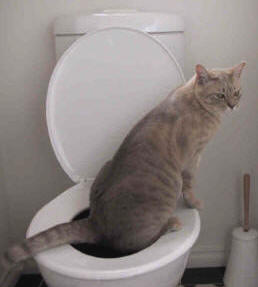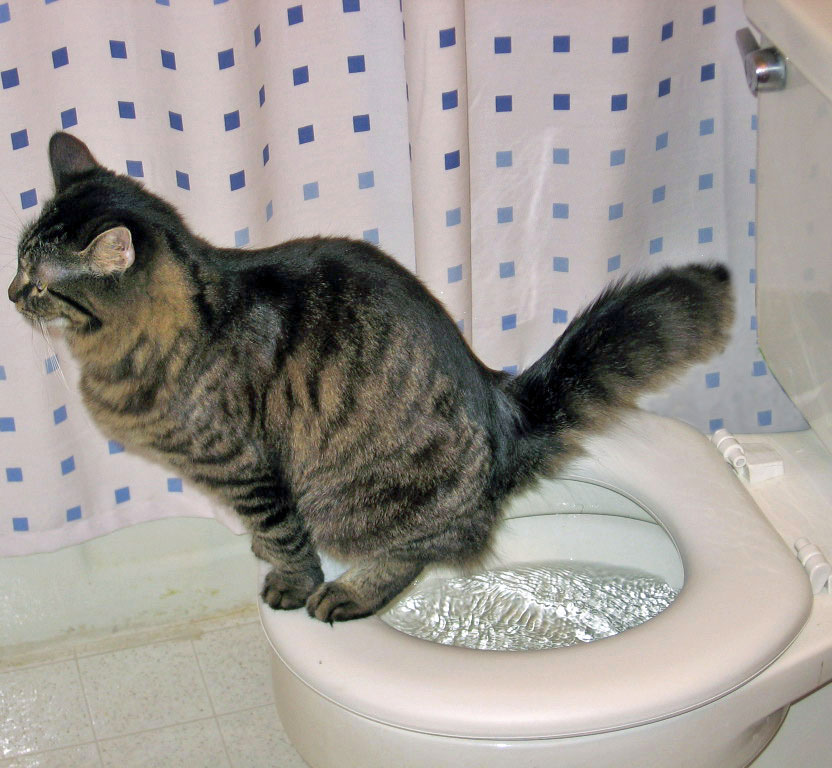Reasons Flushing Cat Poop Down Your Toilet Is Bad - Suggestions for Proper Handling
Reasons Flushing Cat Poop Down Your Toilet Is Bad - Suggestions for Proper Handling
Blog Article
In this article in the next paragraph you can find more sensible content in regards to How to Dispose of Cat Poop and Litter Without Plastic Bags.

Intro
As feline proprietors, it's important to be mindful of how we throw away our feline good friends' waste. While it may appear hassle-free to flush feline poop down the bathroom, this method can have harmful consequences for both the setting and human wellness.
Environmental Impact
Purging feline poop introduces damaging microorganisms and parasites right into the water, posing a considerable risk to aquatic communities. These pollutants can negatively influence marine life and compromise water high quality.
Health Risks
Along with ecological issues, flushing feline waste can likewise position wellness dangers to humans. Feline feces may include Toxoplasma gondii, a bloodsucker that can cause toxoplasmosis-- a potentially extreme illness, particularly for expecting ladies and people with weakened immune systems.
Alternatives to Flushing
The good news is, there are more secure and more liable methods to get rid of feline poop. Think about the complying with options:
1. Scoop and Dispose in Trash
The most typical technique of throwing away feline poop is to scoop it right into a biodegradable bag and throw it in the trash. Be sure to utilize a devoted clutter scoop and throw away the waste promptly.
2. Usage Biodegradable Litter
Opt for biodegradable pet cat clutter made from products such as corn or wheat. These trashes are eco-friendly and can be securely taken care of in the garbage.
3. Bury in the Yard
If you have a yard, consider hiding feline waste in a designated location far from veggie gardens and water resources. Make certain to dig deep adequate to avoid contamination of groundwater.
4. Mount a Pet Waste Disposal System
Invest in a pet garbage disposal system especially developed for cat waste. These systems make use of enzymes to break down the waste, minimizing smell and environmental impact.
Conclusion
Responsible family pet possession extends beyond providing food and shelter-- it additionally includes appropriate waste management. By avoiding purging pet cat poop down the toilet and opting for alternative disposal approaches, we can lessen our ecological impact and safeguard human health and wellness.
Why Can’t I Flush Cat Poop?
It Spreads a Parasite
Cats are frequently infected with a parasite called toxoplasma gondii. The parasite causes an infection called toxoplasmosis. It is usually harmless to cats. The parasite only uses cat poop as a host for its eggs. Otherwise, the cat’s immune system usually keeps the infection at low enough levels to maintain its own health. But it does not stop the develop of eggs. These eggs are tiny and surprisingly tough. They may survive for a year before they begin to grow. But that’s the problem.
Our wastewater system is not designed to deal with toxoplasmosis eggs. Instead, most eggs will flush from your toilet into sewers and wastewater management plants. After the sewage is treated for many other harmful things in it, it is typically released into local rivers, lakes, or oceans. Here, the toxoplasmosis eggs can find new hosts, including starfish, crabs, otters, and many other wildlife. For many, this is a significant risk to their health. Toxoplasmosis can also end up infecting water sources that are important for agriculture, which means our deer, pigs, and sheep can get infected too.
Is There Risk to Humans?
There can be a risk to human life from flushing cat poop down the toilet. If you do so, the parasites from your cat’s poop can end up in shellfish, game animals, or livestock. If this meat is then served raw or undercooked, the people who eat it can get sick.
In fact, according to the CDC, 40 million people in the United States are infected with toxoplasma gondii. They get it from exposure to infected seafood, or from some kind of cat poop contamination, like drinking from a stream that is contaminated or touching anything that has come into contact with cat poop. That includes just cleaning a cat litter box.
Most people who get infected with these parasites will not develop any symptoms. However, for pregnant women or for those with compromised immune systems, the parasite can cause severe health problems.
How to Handle Cat Poop
The best way to handle cat poop is actually to clean the box more often. The eggs that the parasite sheds will not become active until one to five days after the cat poops. That means that if you clean daily, you’re much less likely to come into direct contact with infectious eggs.
That said, always dispose of cat poop in the garbage and not down the toilet. Wash your hands before and after you clean the litter box, and bring the bag of poop right outside to your garbage bins.
https://trenchlesssolutionsusa.com/why-cant-i-flush-cat-poop/

Do you like reading up on Don’t flush cat feces down the toilet? Place feedback down the page. We would be glad to hear your suggestions about this review. We are looking forward to see you back again in the near future. Sharing is good. One never knows, you might be helping someone out. I praise you for your time. Don't forget to check up our website back soon.
Go Services Report this page